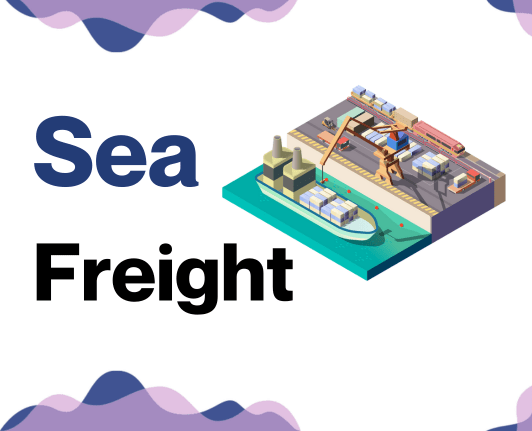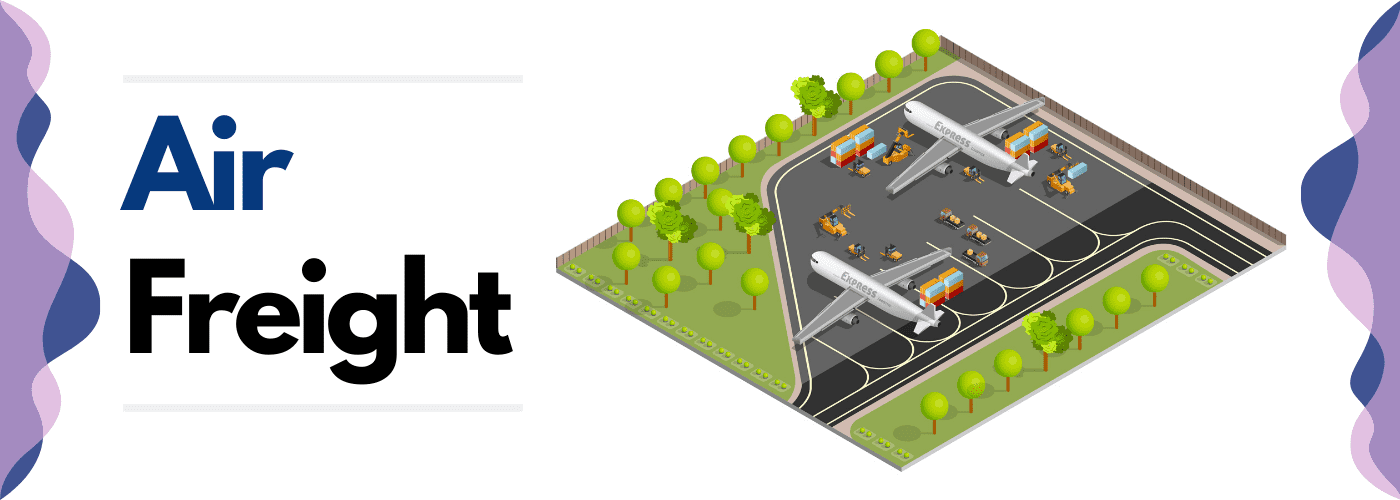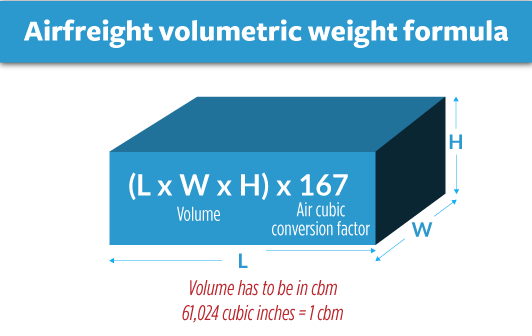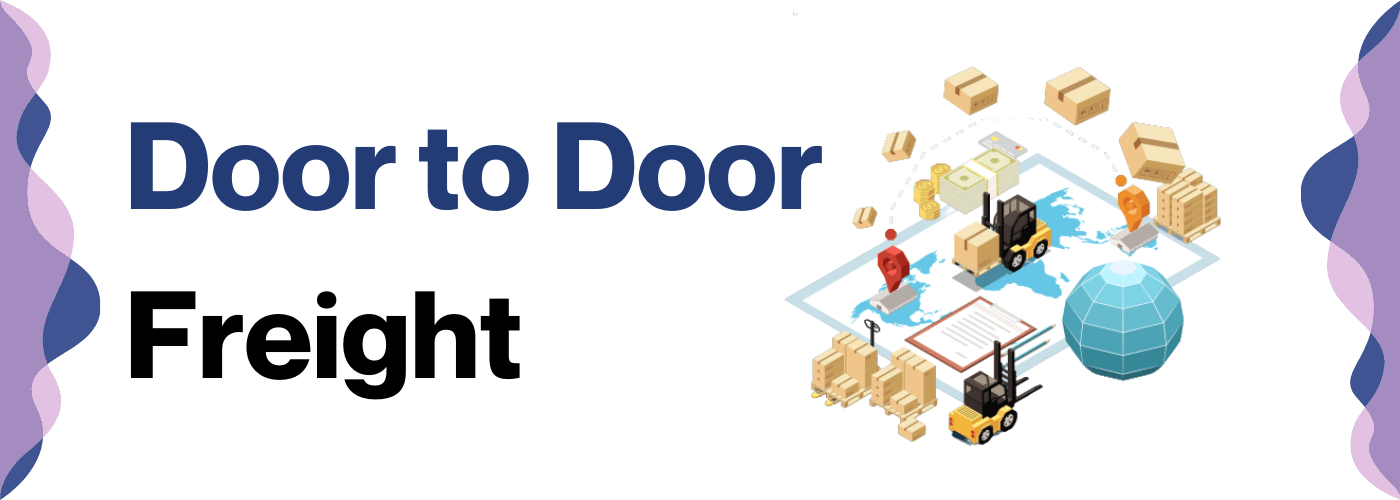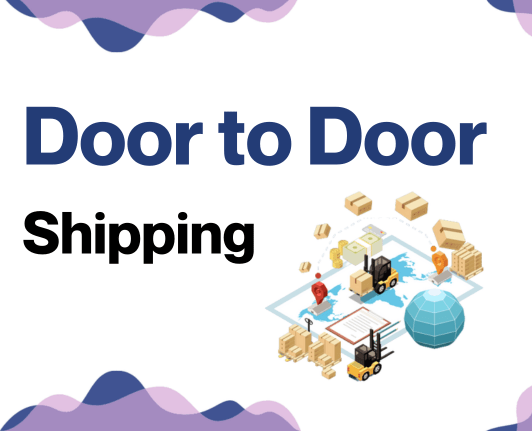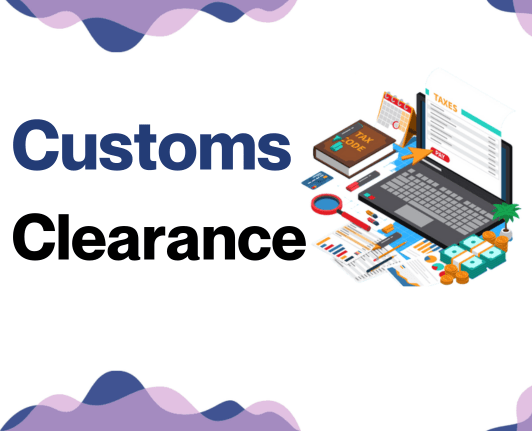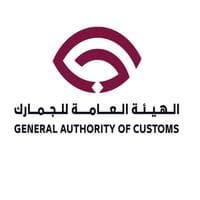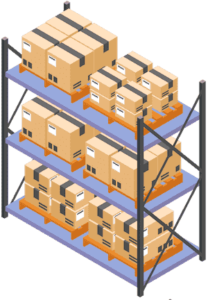Transporting goods between Qatar and Italy may well feel like trying to herd cats across the Sahara! You could be juggling the complexities of transit times, negotiating fluctuating rates, or wading through puzzling customs regulations. This guide aims to turn that desert of confusion into a smooth highway of insight.
We'll explore different freight options, from air and sea to road and rail, along with the intricacies of customs clearance, duties, and tax regulations. We're not just here to explain the logistics, we'll also serve up practical advice tailored to help businesses navigate these international trade waters. If the process still feels overwhelming, let DocShipper handle it for you! As an international freight forwarder, we turn these challenges into success, managing every facet of the shipping journey so that you can concentrate on what you do best - running your business.
Which are the different modes of transportation between Qatar and Italy?
Transporting goods between Qatar's sun-kissed dunes and Italy's cobbled streets might seem as challenging as finding a camel in Rome. But fear not. You essentially have two practical options: air and sea freight. While air transport is like the Ferrari of shipping - swift but pricey - sea freight is your reliable Fiat, slower but easy on the pocket. Picking the right method is much like choosing the right gelato flavor: it depends on what suits your specific tastebuds, or in the case of shipping, your individual business needs and challenges. When in doubts, your freight forwarder is your trusted guide through this.
How can DocShipper help?
Looking to ship goods from Qatar to Italy hassle-free? Trust in DocShipper's expertise, ensuring seamless transport via air, sea, road, or rail. We cover all bases, from customs to paperwork minutiae. Want a free estimate in less than 24 hours? Hit us up. Got queries? Our consultants are on hand to help you out, free-of-charge. Don't hesitate, reach out to us today!
DocShipper Tip: Sea freight might be the best solution for you if:
- You're dealing with hefty quantities or large-scale goods. Sea freight is your go-to for maximizing space without stretching your budget.
- Your cargo doesn't have an urgent deadline, as sea freight typically has longer transit times compared to air or rail.
- Your shipping routes are between major ports, allowing you to leverage the extensive global network of sea shipping lanes.
Sea freight between Qatar and Italy
Trade between Italy and Qatar thrives over the azure waves, connecting vibrant industrial centers via bustling cargo ports like Hamad in Qatar and Napoli in Italy. Ocean shipping here isn't just breathtakingly panoramic—it's keystone-cost-effective for high-volume goods. Yet, surprisingly buoyant costs can run counterpoint to logistical labyrinths and a test of patience. Imagine navigating a Venetian canal system with a huge gondola, that's the reality many businesses face when overlooking key shipping details.
But fear not, we're here to help businesses sail smoothly. This section will offer a lifejacket of best practices to prevent capsizing in administrative waters or straying in the Bermuda triangle of shipping regulations. Together, we'll navigate through common mistakes, all while ensuring you gain the confidence to helm your shipping needs. We promise: no maritime jargons, just easy-to-understand guidance so you can feel like a seasoned ship captain. Anchors up, let's set sail toward efficient and easy ocean shipping!
Main shipping ports in Qatar
Hamad Port
Location and Volume: Situated in Umm Al Houl, Qatar, Hamad Port stands as an important hub in the Arabian Gulf, boasting a shipping volume of over 3 million TEU annually.
Key Trading Partners and Strategic Importance: With direct shipping links to more than 40 ports worldwide, its strategic partners include countries such as Oman, India, China, and Turkey. This makes it an essential component of Qatar's trade diversification strategy, promoting non-oil exports and developing lighter industries.
Context for Businesses: If your goal is expanding into the vast Middle Eastern and Asian markets, incorporating Hamad Port into your shipping strategy could be pivotal. Its state-of-the-art facilities and capacity to handle diverse cargo types, alongside its strategic geographic location, can considerably streamline your business operations.
Ras Laffan Port
Location and Volume: Ras Laffan Port is located in the North-Eastern part of Qatar and is exclusively dedicated to LNG shipments, handling an extremely high volume of exports.
Key Trading Partners and Strategic Importance: Importantly, the port has close partnerships with Spain, India, and South Korea, making it strategically crucial for Qatar’s LNG industry, which is among the largest globally.
Context for Businesses: If your organization is involved in the energy sector, particularly with regards to LNG, Ras Laffan Port might serve as a vital part of your logistics plan. Its ability to cater specifically to LNG shipment needs along with connections to significant energy-consuming nations might just result in a more seamless transaction flow for your business.
Doha Port
Location and Volume: Centrally located in the capital city of Qatar, Doha Port is a crucial regional cruise hub which sees the movement of large passenger volumes throughout the year.
Key Trading Partners and Strategic Importance: Doha Port primarily facilitates the tourism industry, so its trading partners widely consist of the international cruise line companies that frequent this port. It's strategically important for promoting Qatar as a tourist destination.
Context for Businesses: If your business lies within the tourism industry or provides goods and services to the cruise line companies, leveraging Doha Port could provide substantial exposure and potential growth opportunities. The port's modern facilities and ideal location make it a considerable choice for businesses looking to tap into the Middle Eastern tourism market.
Main shipping ports in Italy
Port of Genoa
Location and Volume: Situated in the northernmost point of the western corner of Italy, the Port of Genoa is a crucial hub for trade, boasting a shipping volume of around 2.6 million TEU.
Key Trading Partners and Strategic Importance: The port's key trading partners include China, Spain, and Turkey. Besides, due to its strategic importance in the Mediterranean Sea, it's considered one of the busiest ports in Europe.
Context for Businesses: If you are looking to strengthen your commercial ties with the Mediterranean and European markets, the Port of Genoa's exceptional network and high freight volumes make it an attractive cornerstone for your supply chain.
Port of Trieste
Location and Volume: Tucked in the Italian region near the Slovenia border on the Adriatic Sea, the Port of Trieste flaunts a shipping volume of about 62 million tons of goods per year.
Key Trading Partners and Strategic Importance: This port primarily trades with China, Germany, and the United States. It's strategically alignment and position make it the southern gateway for trade to Central and Eastern Europe.
Context for Businesses: If you aim to penetrate the Central and Eastern European markets, the Port of Trieste could potentially be an essential asset in your logistics strategy with its impressive rail links and trade routes.
Port of Naples
Location and Volume: Located on the west coast of Italy, the Port of Naples handles an estimated annual shipping volume of 25 million tons of cargo.
Key Trading Partners and Strategic Importance: It mainly engages in trade with Spain, Greece, and the United States. The port serves as an important shipping gateway for southern Italy due to its prime Mediterranean location.
Context for Businesses: For businesses targeting the southern Italian coastal regions and the wider Mediterranean area, the Port of Naples could potentially play a vital role in your logistics plan, thanks to its strategic geographical location.
Port of Gioia Tauro
Location and Volume: Located in Calabria, southern Italy, the Port of Gioia Tauro boasts an annual shipping volume of approximately 3 million TEU.
Key Trading Partners and Strategic Importance: Ranks among the leading Mediterranean transshipment ports boasting robust trade relations with China, Spain, and Egypt.
Context for Businesses: If your business aims to improve its supply chain in the Mediterranean region, the Port of Gioia Tauro, known for its efficient transshipment capabilities, could be a vital pivot in your logistical architecture.
Port of Venice
Location and Volume: Resting on the Adriatic Sea in northeastern Italy, the Port of Venice operates with an annual shipping volume of nearly 30 million tons of cargo.
Key Trading Partners and Strategic Importance: Notable trading partners include Turkey, Egypt, and the USA, and its strategic importance lies in its connections to mainland Europe.
Context for Businesses: For businesses working on expanding their reach in Eastern Europe and beyond, the Port of Venice might be an indispensable part of your logistics with its strong connectivity to mainland Europe.
Port of La Spezia
Location and Volume: Situated in the Liguria region of Italy, the Port of La Spezia handles an impressive annual shipping volume of over 1.3 million TEU.
Key Trading Partners and Strategic Importance: Particularly enjoys robust trading relations with the Netherlands, the USA, and China. As a Mediterranean alternative to Northern ports, it retains strategic significance.
Context for Businesses: Should you be eying a robust presence within the Mediterranean and the European mainland, the Port of La Spezia's outstanding service and strategic lift could streamline your shipping and supply chain strategy.
Should I choose FCL or LCL when shipping between Qatar and Italy?
When shipping goods between Qatar and Italy, sea freight offers two tempting options: Full Container Load (FCL) or Less than Container Load (LCL), also known as consolidation. Your choice has a direct bearing on cost, delivery timeline, and overall success of your shipment. So, what's the difference? And, more importantly, which option best suits your specific needs? In the following discussion, we'll demystify these concepts, enabling you to make the smartest choice for your business's unique shipping requirements. Prepare to set your worries adrift!
LCL: Less than Container Load
Definition: LCL (Less than Container Load) shipment allows multiple shippers to share space within a single container, making it an ideal solution for small volumes.
When to Use: Consider LCL freight when your cargo is less than 13-15 CBM. It provides price flexibility and is able to accommodate low volume shipments efficiently.
Example: Let's say you have a small furniture business in Qatar and need to ship 10 CBM of chairs to a retailer in Italy. Instead of paying for an entire container, you can opt for LCL shipping to share a container with other shippers, significantly reducing costs.
Cost Implications: Using LCL can be more cost-effective for smaller shipments because you only pay for the space you use. However, LCL may include additional handling charges at the origin and destination ports due to the consolidation and deconsolidation of goods. Overall, LCL provides a balance between cost and volume, making it a viable option for shippers with less-than-full-container loads.
FCL: Full Container Load
Definition: FCL, or Full Container Load, in shipping means that a single container is used to transport goods exclusively for one consigner, hence the term 'full'.
When to Use: Choose FCL shipping when the cargo is more than 13/14/15 CBM. It's often considered less expensive for high volume cargo as the FCL shipping quote is cost-effective. Furthermore, its enhanced security, thanks to the container being sealed from origin to destination, can be a selling point for many businesses.
Example: Imagine you're a Doha-based furniture manufacturer shipping a batch of 200 couches to a retailer in Rome. Utilizing an FCL container, specifically a roomy 40'ft container, you'll only pay a single flat rate. Plus, your goods remain sealed in their container until they reach the retailer.
Cost Implications: FCL pricing hinges on the container size, not the weight or type of goods. Hence, a 20'ft container filled to the brim can portion out cheaper per unit than an LCL shipment. However, remember the cost effectiveness escalates with volume. Also, since FCL is a door-to-door service, secondary costs, like storage fees, are usually avoided.
Unlock hassle-free shipping
Shipping between Qatar and Italy? Look no further! DocShipper, your go-to freight forwarder, is dedicated to streamlining your shipping experience. Lean on the expertise of our ocean freight specialists to identify the most cost-effective and efficient solution, be it consolidation or full container. Factors such as cargo volume, weight, type, and urgency are considered to tailor an ideal strategy for you. Ready to simplify international shipping? Get a free quote from us today!
How long does sea freight take between Qatar and Italy?
Typically, sea freight between Qatar and Italy averages about 20-45 days. However, this timeframe can vary based on several factors, including the specific ports involved, the weight of your cargo, and the nature of the goods being shipped. For a detailed and personalized quote tailored to your shipment, getting in touch with a freight forwarder like DocShipper is highly recommended.
As for the transit times between the main freight ports of both countries, please see this text-only table:
| Qatar Ports | Italy Ports | Average Transit Time (days) |
| Hamad Port | Port of Genoa | 53 |
| Hamad Port | Port of Naples | 52 |
| Hamad Port | Port of La Spezia | 53 |
| Hamad Port | Port of Cagliari | 47 |
*Please note that these are just average times and the actual transit time may vary. To obtain a more precise estimate, please reach out to a freight forwarder.
How much does it cost to ship a container between Qatar and Italy?
Calculating the exact cost to ship a container between Qatar and Italy is like trying to hit a moving target. With ocean freight rates fluctuating based on factors like Point of Loading, Point of Destination, carrier choice, and goods type, providing definite shipping cost figures is tough. Let's not forget the unpredictable market changes every month too. These variables can steer your shipping cost anywhere between a very wide price range per CBM. Rest assured, our skilled shipping specialists are here to help. We tailor quotes based on your specific situation, ensuring you get the best possible rates that truly reflect your shipping needs.
Special transportation services
Out of Gauge (OOG) Container
Definition: An OOG container, short for Out of Gauge, is designed to transport oversized cargo that doesn't fit into standard containers due to extended dimensions. This type of container has open sides and tops, allowing for easy loading and unloading of large items.
Suitable for: OOG containers are ideal for oversized or heavy cargo.
Examples: This can include large machinery, construction or farming equipment, or large parts of ships or aircraft.
Why it might be the best choice for you: If your goods exceed standard container measurements, or cannot be disassembled into smaller parts, then out of gauge cargo in an OOG container may be your best option.
Break Bulk
Definition: Break bulk refers to goods that need to be loaded individually, not in containers, onto a vessel. They are typically bagged, baled, crated, or unitized for easy handling.
Suitable for: Break bulk is ideal for shipping goods which may not fit into standard containers but aren't large enough for an OOG container.
Examples: Goods such as metal sheets, steel rods, timber, or bagged or crated items like grain, cement, or machinery parts.
Why it might be the best choice for you: If your cargo doesn't fit into standard containers but isn't large enough to justify using an OOG container, then shipping with break bulk is a feasible option.
Dry Bulk
Definition: Dry bulk involves the transportation of loose cargo load which is shipped in large quantities and doesn't require packaging.
Suitable for: Dry bulk is ideally suited for goods that can be handled as a liquid or granulated material.
Examples: Items like coal, grain, or ore are typically shipped as dry bulk.
Why it might be the best choice for you: If your business deals with large quantities of raw and unpackaged materials, opting for dry bulk shipping might be the most cost-effective and practical solution.
Roll-on/Roll-off (Ro-Ro)
Definition: A Roll-on/Roll-off (Ro-Ro) vessel is a type of sea vessel that allows cargo to be driven on at the origin and off at the destination point.
Suitable for: Ro-Ro vessels are perfectly suited for large vehicles and machinery that can be wheeled on and off the ship.
Examples: Trucks, trailers, cars, and even rail cars can be moved using a Ro-Ro vessel.
Why it might be the best choice for you: If you're shipping self-propelled, towable or forkliftable vehicles or equipment, Ro-Ro is likely the safest and most efficient mode of transportation.
Reefer Containers
Definition: Refrigerated containers, or reefer containers, are refrigerated shipping containers used for the transport of perishable goods.
Suitable for: Reefer containers are ideal for any product or material that needs to be shipped at a controlled temperature.
Examples: Pharmaceuticals, dairy products, fresh or frozen foods, flowers, and certain chemicals are typically transported in reefer containers.
Why it might be the best choice for you: If you're shipping temperature-sensitive goods, a reefer container can maintain a stable climate and ensure your goods arrive in prime condition.
Ready to start shipping between Qatar and Italy? Let DocShipper help you find the optimal shipping solution for your specific needs. Contact us today, and we'll provide a comprehensive shipping quote in less than 24 hours.
DocShipper Tip: Air freight might be the best solution for you if:
- You're up against the clock or have a non-negotiable delivery date. Air freight is your fastest bet for meeting tight timelines.
- Your shipment is on the smaller side, falling below 2 CBM. Air freight is particularly well-suited for compact cargo loads.
- Your goods are destined for locations that aren't well-served by maritime or rail options. Air freight expands your reach by connecting you to a vast array of international airports.
Air freight between Qatar and Italy
Air freight from Qatar to Italy is like an exclusive express train. It whisks your goods across borders with impressive speed and dependability. Perfect for lighter, valuable cargoes, say, expensive electronics or time-sensitive pharmaceuticals.
But it's not all roses and unicorns. Many shippers jump headfirst and are hit hard by mistakes that sting their pockets. Imagine buying a plane ticket for your pet elephant by paying the same fare as for a rabbit, not using the correct weight calculation. Ouch! Or the horror of missing small tips and tricks that multiply your expenses. We're diving into these critical missteps, preparing you to skirt around potential pitfalls with the deftness of a ballet dancer.
Air Cargo vs Express Air Freight: How should I ship?
Choosing between air cargo and express air freight for your business can be like picking between an economy class and a private jet ride. If you're shipping from Qatar to Italy, air cargo means your goods fly via commercial airlines sharing space with other freights, but express air freight reserves them a seat in a dedicated plane for an express journey. Your choice depends on your parcel urgency, budget, and size. Let's dive deeper into the specifics of these two flight paths.
Should I choose Air Cargo between Qatar and Italy?
When shipping goods between Qatar and Italy, leveraging air cargo can strike a balance between cost-effectiveness and reliability. For instance, well-established airlines like Qatar Airways Cargo and Alitalia Cargo are well-reputed in punctually delivering shipments. If you're working with above 100/150 kg (220/330 lbs) of cargo, this proves even more attractive. While costs can scale favorably with these larger amounts, note that transit times may be longer due to airlines' fixed schedules. Ultimately, selecting air freight may align well with your budgetary obligations, fulfilling your logistics needs without overly straining your financial resources.
Should I choose Express Air Freight between Qatar and Italy?
Choosing express air freight with no passengers - offered by reputed courier firms like FedEx, UPS, or DHL - can be a game-changer when shipping goods from Qatar to Italy. Ideal for shipments under 1 CBM or around 100/150 kg, it offers rapid and secure transit for smaller consignments. So, if speed is your top priority and your cargo isn't too bulky, this could be the perfect transportation solution for your business needs. Think of it as your personal delivery flight speeding your goods directly to their destination.
Main international airports in Qatar
Hamad International Airport
Cargo Volume: Hamad International Airport ranks as the world's third largest cargo airport, handling more than 2.3 million tons of cargo in 2020.
Key Trading Partners: Its main partners include Asia (China, India), America (USA), and Europe (UK, Germany).
Strategic Importance: As the major hub of the Middle East, the airport is situated at the crossroads of east-west trade routes, making it a key link in global supply chains.
Notable Features: The airport is equipped with two parallel runways that can handle the world's largest aircraft, and an advanced cargo terminal capable of handling and storing a diverse range of goods including perishables, pharmaceuticals, and live animals.
For Your Business: If your business deals with high-volume or special care shipments, Hamad International Airport's facilities and geographical location could provide an efficient and reliable gateway for your goods entering or leaving the Middle East.
Doha International Airport
Cargo Volume: Before the opening of Hamad International, Doha International was the main cargo hub in Qatar, still processing a significant volume of freight.
Key Trading Partners: Predominantly serves the Middle East, Asia, and Europe.
Strategic Importance: Despite being superseded by Hamad International, Doha is still used for smaller freight flights and private aviation, offering an alternative entry point into Qatar.
Notable Features: Compared to Hamad, Doha offers less congestion and quicker turnaround times for less bulky cargo.
For Your Business: If your business involves smaller, time-critical shipments, the speed and agility that Doha International Airport can offer may make it a suitable choice for your shipping strategy.
Note: While Doha Airport does not directly handle cargo, it has dedicated services to cargo terminals facilitating worldwide freight traffic. Therefore, the airport can still be an important asset for businesses seeking efficient logistics solutions within Qatar.
Main international airports in Italy
Leonardo da Vinci–Fiumicino Airport
Cargo Volume: Over 2.2 million metric tonnes per year.
Key Trading Partners: China, USA, UAE, Saudi Arabia.
Strategic Importance: Serving as Italy's largest airport, Fiumicino's locality to Rome provides easy access to the country's political, cultural, and economic hub.
Notable Features: State-of-the-art cargo city, temperature-controlled facility for perishable goods.
For Your Business: With an expansive cargo area and modern facilities catered to various product types, Fiumicino can provide your business with efficient handling for different types of shipment needs.
Milan Malpensa Airport
Cargo Volume: More than 500,000 metric tonnes per year.
Key Trading Partners: China, USA, UAE, Germany, France.
Strategic Importance: Malpensa is the second largest airport in Italy and the busiest for cargo traffic, crucial for businesses targeting the industrial north.
Notable Features: Cargo Terminal 1 houses multiple airlines' operations, Cargo Terminal 2 for DHL and FedEx.
For Your Business: If your business caters to North Italy and Europe, Malpensa, being Milan's primary airport with extensive cargo handling capability, is your gateway for cargo distribution.
Turin Airport
Cargo Volume: Above 50,000 metric tonnes per year.
Key Trading Partners: Germany, France, UK.
Strategic Importance: Turin, the heart of Italy's automobile industry, is a strategic point for automotive sector cargo shipping.
Notable Features: It houses a specialized cargo terminal, including a modern automated handling system.
For Your Business: Ideal if you run an automotive parts business, Turin Airport's focused cargo infrastructure might give your shipments the careful handling they require.
Venice Marco Polo Airport
Cargo Volume: Around 35,000 metric tonnes per year.
Key Trading Partners: Canada, UAE, Switzerland, France.
Strategic Importance: The airport is a conduit for shipments to Venice and the broader Veneto region.
Notable Features: Venice Marco Polo offers a cargo terminal capable of handling various shipments, including dangerous goods.
For Your Business: If your target market includes Venice and the Veneto region, this airport should factor in your cargo strategies with its reliable and diverse handling capabilities.
Friuli Venezia Giulia Airport
Cargo Volume: Nearly 25,000 metric tonnes per year.
Key Trading Partners: Germany, Austria.
Strategic Importance: Located in north-eastern Italy, the airport serves as a key entry point for cargo for the region.
Notable Features: The airport boasts an expansive cargo handling area ideal for large shipments.
For Your Business: Your bulky shipments can be comfortably accommodated in the Friuli Venezia Giulia airport's commodious warehouses. This airport could be a strategic base for your business if your main markets are in northeast Italy or surrounding countries.
How long does air freight take between Qatar and Italy?
Shipping goods between Qatar and Italy via air freight typically takes between 3 to 5 days under standard conditions. However, keep in mind, the transit time can be influenced by a variety of factors. Particulars such as the selected airports, the overall weight of the shipment, and the type of goods in transit can play crucial roles in extending or shortening this timeframe. To obtain the most accurate shipping times tailored to your specifications, consider consulting with a dedicated freight forwarder like DocShipper.
How much does it cost to ship a parcel between Qatar and Italy with air freight?
Air freight costs between Qatar and Italy can widely range, with an extensive average of $4 to $20 per kilogram. However, it's essential to note that exact prices can't be standardized due to factors such as distance from the airports, package dimensions, weight, and the goods' nature. Our dedicated team understands these complexities and strives to offer tailored solutions - we quote on a case-by-case basis to ensure the best rates for your specific needs. Contact us and receive a free quote in less than 24 hours.
What is the difference between volumetric and gross weight?
Gross weight refers to the actual weight of your shipment, including all packaging and pallets. On the other hand, volumetric weight, sometimes called dimensional weight, is a pricing technique for commercial freight transport. It considers the actual space a package consumes in an aircraft, rather than the actual gross weight.
For Air Cargo, gross weight is straightforward: just weigh your shipment. The volumetric weight, however, is calculated with this formula: Length(cm) x Width(cm) x Height(cm) / 6000, and the result is in kg. For Express Air Freight services, the formula remains the same, but the dividing factor changes to 5000 instead of 6000.
Let's take an example. Your shipment measures 100cm x 100cm x 100cm and weighs 150kg. With Air Cargo, you’ll get 166.67kg (or 367.4 lbs) as the volumetric weight (100 x 100 x 100 / 6000). With Express Air Freight, the volumetric weight turns out to be 200kg (or 440.9 lbs) (100 x 100 x 100 / 5000).
It's essential to know these two weights because freight charges are determined by whichever is higher between the gross and volumetric weight. Thus, efficient packaging that reduces volume can lower your freight costs, especially for lower-density shipments.
DocShipper tip: Door to Door might be the best solution for you if:
- You prioritize a smooth, hassle-free shipping experience from start to finish. Door-to-door services manage the entire journey, from initial collection to ultimate delivery.
- You appreciate streamlined communication and would rather deal with one person. A dedicated agent is usually assigned to oversee every detail of your door-to-door shipment.
- You want limit the number of touchpoints for your cargo. Door-to-door services reduce the frequency of transitions between various transport methods, thereby lowering the likelihood of damage or loss.
Door to door between Qatar and Italy
Navigating the seas of international shipping? Door to Door delivery could be your trusty compass! Ideal for Qatar-Italy routes, it affords you convenience by handling everything - pickup, customs, and delivery. Stress less and save time - perfect for focused businesses! Ready to embark on this voyage of seamless logistics? Let's dive in!
Overview – Door to Door
Shipping goods from Qatar to Italy can feel like a maze of logistics and paperwork. But, imagine a world where your cargo is picked up, shipped, cleared through customs, and delivered right to your doorstep in Italy, without lifting a finger. Welcome to door-to-door shipping! This is a seamless, stress-free solution that circumvents shipping complexities, making it the clear favorite among DocShipper's clients. But, like any service, it has its own pitfalls; the cost is higher, and dealing with multiple suppliers might be challenging. Still, for a hassle-free experience, considered by many as invaluable, door-to-door shipping is paramount in today's turbulent logistics landscape.
Why should I use a Door to Door service between Qatar and Italy?
Ever found yourself tangled in the complex web of logistics? Consider a Door to Door service for shipping goods from Qatar to Italy. Let's dive into the five key reasons why this option might just be your logistical lifesaver.
1. Simplify Your Logistics: Door to Door service streamlines your supply chain operations. Forget about coordinating with multiple agencies for different transport segments. One service provider handles the entire shipping process, from initial pick-up in Qatar right down to final delivery in Italy.
2. Time-Sensitive Deliveries: If you're racing against the clock, look no further. This service ensures quick and efficient movement of your shipments, reducing your downtime and speeding up your product delivery cycles.
3. Specialized Cargo Care: Got unique, complex or delicate cargo that needs extra attention? No worries. Door to Door services specialize in handling such cargo effectively and attentively, minimizing risk of damage or loss.
4. Full Convenience Trucking: You're spared the headache of trucking arrangements. Whether it's local drayage in Qatar or the long haul to Italy, Door to Door providers take care of the whole trucking journey, making the process as seamless as possible for you.
5. Stress-free Scenario: Let's face it – logistics can be stressful. Door to Door service offers a stress-alleviation package wrapped up in convenience, efficiency, and reliability making your entire shipping experience a smooth sail.
Consider these reasons and imagine the relief of having a shipping partner who’s in it for the long haul, quite literally!
DocShipper – Door to Door specialist between Qatar and Italy
Experience seamless, stress-free Door to Door shipping between Qatar and Italy with DocShipper. We take the load off your shoulders by handling every minute detail - from packaging to transportation, customs clearance, and all possible shipping methods. We are experts in this field, ensuring smooth transitions for your goods. Plus, enjoy the support of a dedicated Account Executive guiding you through each step. Reach out today for a free estimate within 24 hours or call our consultants at any time. With DocShipper, you can truly sit back and watch us do the magic.
Customs clearance in Italy for goods imported from Qatar
Customs clearance is a succession of legal procedures required for the importation of goods, and Italy's processes can be complex, especially for goods from Qatar. It's a labyrinth filled with possible unexpected fees, charges, and intricate rules on customs duties, taxes, quotas, and licenses. One misstep can potentially hold up your goods in customs indefinitely. As worrisome as this might appear, rest assured that the depth of these matters will be discussed in the following sections.
Remember, as a leading global freight forwarder, DocShipper can guide you through this minefield, assisting with all types of goods anywhere in the world. To step further into this, provide us with the origin, value, and HS Code of your goods, and we will offer a precise estimate to help budget your project. So, let's navigate these complex waters together.
How to calculate duties & taxes when importing from Qatar to Italy?
Calculating customs duties when importing goods from Qatar to Italy requires a blend of intricate details and precision. The process begins with understanding several key elements such as the country of origin, Harmonized System (HS) Code of the commodity, the declared customs value of the goods, the applicable tariff rate, and any additional taxes or fees that might apply to your specific imports.
In descending into the specifics, the first order of business is to pinpoint the country where the goods were manufactured or produced. This identification is of paramount importance as it sets the foundation for accurately estimating the duties and taxes. Different countries have different trade agreements with Italy, and knowing the country of origin becomes crucial for the calculation. Thus, while importing from Qatar, the duties and tariffs are influenced by the trade agreements in place between Qatar and Italy.
Step 1 - Identify the Country of Origin
Understanding the goods' Country of Origin is the first step in determining duties and taxes on your imports from Qatar to Italy. Why? Here's the scoop:
1. It's crucial to Customs: Customs authorities identify products by their origin. This knowledge helps classify them under correct categories for duties and taxes.
2. Unlocks Trade Agreements: Qatar and Italy have agreements that can translate to lower custom duties. Every dollar saved counts!
3. Helps Avoid Import Restrictions: Some goods from specific origins face restrictions, or worse, prohibitions. Stay one step ahead by being aware.
4. Simplifies your Paper Trail: Accurate documentation speeds up clearance, preventing costly delays.
5. Find your correct Harmonized System (HS) Code: Your goods' origin plays a vital role in getting this right.
Your shipment could benefit from favourable terms under the Italy-Qatar bilateral agreements or larger pacts like the Greater Arab Free Trade Area (GAFTA). But remember, each agreement comes with its unique terms and requirements. So, do your homework to ensure you qualify. Import restrictions? Italy has its list, so check it to avoid roadblocks. Finally, ensure accurate product identification for smooth sailing with customs and duty estimate. Stay smart, stay compliant!
Step 2 - Find the HS Code of your product
The Harmonized System (HS) Code is a standardized numerical method of classifying traded products. It's used by customs authorities around the world to identify products for the application of duties and taxes. As you embark on your business’s international trading journey, it's important to correctly identify the HS Code of your goods.
One way to find an HS Code is by asking your supplier. They're often well-versed in import regulations and may know the HS Code for the products they're handling.
If getting the HS Code from your supplier isn't feasible, fret not! We offer an easy step-by-step guide to help you find it yourself.
The first step is to use a lookup tool, such as the Harmonized Tariff Schedule (HTS).
Next, type your product's name into the search bar.
Last but not least, check the 'Heading/Subheading' column amidst the search results – that's where you'll find your HS code.
As a note of caution, it's crucial to ensure the accuracy of your HS Code. Incorrectly classifying your goods can lead to shipment delays, or even fines.
Here's an infographic showing you how to read an HS code.
Step 3 - Calculate the Customs Value
Getting your goods from Qatar to Italy means understanding what goes into a customs value. Sure, you know what your products are worth, but customs value is different. It's the sum that determines your import duties and taxes. It's the CIF–cost (value of your items), insurance, and freight (shipping costs). So, if your product costs $500, international shipping is $50, and insurance is $30, your customs value will be $580.
This figure matters as Italian customs authorities will use it to calculate the percentages of duties your shipment owes. Don't confuse it with your product's selling price or the price you paid for it. It's all about that final sum: your CIF value. So next time you're jotting down figures, remember – CIF is the magic acronym. Get that right, and you're well on your path to successful importing.
Step 4 - Figure out the applicable Import Tariff
Import tariffs are taxes imposed on imported goods. One type used in Italy is the Ad Valorem tariff, calculated as a percentage of the item’s value. To find the tariff for your products, visit the TARIC System - European Customs and follow these steps with your previously identified HS code:
1. Enter your HS code and select Qatar as the country of origin.
2. Review the duties and taxes applied to your product.
For example, suppose you're importing ceramic tiles from Qatar, having an HS code 690790. Upon entry in the TARIC system, you receive an ad valorem tariff of 6.5%. If your CIF (Cost, Insurance, and Freight) for the tiles totals $10,000, your import duty would be 6.5% of $10,000, equating to $650. Understanding this is vital to accurately budget for your import process and navigate the logistics of international trade.
Step 5 - Consider other Import Duties and Taxes
When it comes to importing goods from Qatar to Italy, understanding the potential cost implications of different duties and taxes is key. Aside from the standard tariff rate, there might be additional duties based on the origin country and product nature. For instance, excise duties might be applied on specific items like alcohol or tobacco while anti-dumping taxes can come into play if goods are sold at significantly lower prices than usual.
Most importantly, don't forget about the Value Added Tax (VAT), which varies depending on the type of goods being imported. Generally, VAT is calculated as a percentage of the Cost, Insurance, and Freight (CIF) value added to any duties payable. Let's say, for example, your CIF value is $10,000 and your VAT rate is 22%. Your VAT will be $2,200 (just an example, actual VAT rate may differ).
Remember that these extra charges can notably affect your final import cost. Try to familiarize yourself with them, or seek expert counsel to help accurately forecast your total landing cost and avoid any nasty surprises. It's all about being well-prepared and informed on your importing journey from Qatar to Italy.
Step 6 - Calculate the Customs Duties
In this step, we calculate customs duties for goods shipped from Qatar to Italy. This calculation involves several crucial values; the customs value of your goods (this is their price paid or payable), VAT, anti-dumping taxes, and sometimes even Excise Duty.
1. Without VAT: Let's assume your goods' customs value is $10,000. For a customs tariff rate of 5%, you'd pay $500.
2. With VAT, but no Anti-dumping duty: Say your customs value is $20,000 with a 5% tariff and Italian VAT at 22%. You'd first calculate the duty ($1,000). ADD this to the customs value, giving a 'duties paid value' of $21,000. Finally, apply VAT to get $4,620, and your total becomes $5,620.
3. With VAT and Anti-Dumping duty: Imagine your goods have a customs value of $30,000, a 5% tariff and a 10% anti-dumping duty. Apply the customs tariff ($1,500) and then the anti-dumping duty on the total value so far ($3,150). This gives a 'duties paid value' of $34,650, and adding the VAT equals $7,623, for a total of $8,273.
Bear in mind that these figures exclude any potential Excise Duty, applied based on the specific type and quantity of goods.
Nervous about getting these calculations right? DocShipper can handle your customs clearance process wherever in the world you're shipping. We ensure you're charged correctly. Reach out to us for a free quote in under 24 hours.
Does DocShipper charge customs fees?
Understanding costs is critical for your shipping process. At DocShipper, we act as custom brokers in both Qatar and Italy, and while we do charge a fee for our customs clearance services, remember, this is distinct from customs duties and taxes – those go straight to the government. Rest assured, we foster transparency by providing you with the documentation from the customs office, evidencing that you're only paying what's mandatory by the government. It's all about delivering clarity in a complex system.
Contact Details for Customs Authorities
Qatar Customs
Official name: The General Authority of Customs in Qatar
Official website: www.customs.gov.qa/
Italy Customs
Official name: Agenzia delle Dogane e dei Monopoli (Italian Customs and Monopolies Agency)
Official website: www.agenziadoganemonopoli.gov.it/
Required documents for customs clearance
Cut through the red tape of customs clearance with ease. You're about to familiarize yourself with essential documents: the Bill of Lading, Packing List, Certificate of Origin, and Documents of Conformity. This crucial knowledge can remove bottlenecks, keep your business on track, and spare you from costly mistakes. Let's delve into it!
Bill of Lading
A Bill of Lading (BoL) is your key to moving goods from Qatar to Italy. It's like a valet ticket for your shipment - a proof of ownership. It details what you're shipping, where it's going, and who's involved. It's critical when claiming your goods at Italian customs. With the shift to digital, consider opting for an electronic or 'telex' release. It fast-tracks the whole process, saving time, paper, and giving you an edge in case of any shipping mishaps. For air cargo, the Airway Bill (AWB) serves a similar role. Remember, keeping your BoL or AWB safe and accessible smoothens your customs clearance process. It's an essential step to ensuring your shipment lands and stays in Italy trouble-free.
Packing List
When shipping goods from Qatar to Italy, your Packing List is your golden ticket. This isn't just some shipping accessory—it's paramount for customs clearance, both for sea and air freight. Picture it as the DNA of your shipment—itemizing the types, quantities, and descriptions of each consignment. Mimicking your package's contents, it holds immense power in decimating the complexities of your customs clearance journey!
Accuracy is the game. Imagine shipping Abayas from Doha to Milan—your Packing List needs to detail every bead, every thread! Any mismatch could mean delivery delays and unsatisfied customers. So, as a shipper, you’ve got this crucial task of precisely crafting your Packing List. Your business, your customers, and your reputation rely on its authenticity. So, dot your i’s, cross your t’s, and let's get shipping!
Commercial Invoice
If you're shipping goods from Qatar to Italy, crafting a spot-on Commercial Invoice is paramount. This invoice should detail essential information like the full names and addresses of the buyer and seller, detailed description of the goods, their value, quantity, and the Harmonized System (HS) codes. Got a consignment of luxury watches? Double-check those HS codes as they help authorities classify and levy correct import duties.
As your Commercial Invoice plays a starring role in the customs clearance, accuracy is crucial. Ensure it aligns perfectly with other shipping documents like the Bill of Lading or Air Waybill to avoid delays. Remember, when the Italian customs officers can process your paperwork quickly, your goods are closer to their journey's end. So, time invested in a perfect Commercial Invoice saves you time at the border.
Certificate of Origin
Embarking on a shipping journey from Qatar to Italy? A crucial document you need is the Certificate of Origin. This vital paper confirms your shipment's country of manufacture – an important factor as some goods can attract preferential customs duty rates based on their place of production. Say you're shipping traditional Qatari textiles; detailing Qatar as the product origin could potentially secure you these favorable rates. However, the lack of this certificate might lead to delays or higher expenses, as customs might impose standard duty rates. So always keep your Certificate of Origin handy and accurate to sail through the customs smoothly. End of the day, it's about making your shipping process hassle-free.
Certificate of Conformity (CE standard)
When shipping goods from Qatar to Italy, securing a Certificate of Conformity (CE standard) is an absolute must. This isn't just a quality assurance; it's evidence that your product meets specific safety, health, and environmental standards, in line with the European market's stringent regulations. Whereas quality assurance might be your promise of impeccable product integrity, the CE mark is Italy's assurance that your goods are 'up to code'.
Though not a US standard - their markets look for certification such as UL or FCC marks, the CE standard has an international reputation for stringently assessing product conformity. The bottom line? Don’t overlook the importance of this certificate. It’s the green light for your imports to Italy, and without it, you might face customs delay, which in turn can affect your deadlines and relationships with Italian business partners. Ensure your goods carry this seal of approval for a smoother shipping experience.
Your EORI number (Economic Operator Registration Identification)
Preparing to transport your goods between Qatar and Italy? You'll need an EORI number - it's more than just an ID, it's your ticket to a smoother customs procedure. Short for Economic Operator Registration Identification, this gem streamlines your journey, simplifying the tracking of imports and exports within the EU. The registration process is straightforward and it's done online. Once registered, your unique EORI number will be recognized throughout the EU and in any other countries requiring it.
Let's look at a scenario: you're a furniture manufacturer in Qatar, exporting unique pieces to a boutique in Rome. You can't ship without your EORI - it's your unique identifier, and without it, your shipment would be delayed in customs - a situation no one wants. So, before you ship, ensure you're EORI-registered to enable a seamless journey for your goods from Doha to Rome.
Get Started with DocShipper
Navigating the complex maze of customs clearance between Qatar and Italy doesn't have to be daunting! DocShipper offers comprehensive assistance, streamlining every step to guarantee smooth, hassle-free deliveries. Why struggle with paperwork and processes yourself? Let our expertise work for you. Contact us now for a free quote, and we'll get back to you in less than 24 hours. Let's handle your shipping stress together.
Prohibited and Restricted items when importing into Italy
Avoiding pitfalls and costly penalties while importing into Italy takes smart planning. You'll need to be savvy about what's banned or restricted. Missteps can be harsh on both your pocket and business reputation. Stay with us as we guide you through the do's and don'ts.
Restricted Products
- Pharmaceutical products: You have to apply for a license from the Italian Medicines Agency (AIFA).
- Firearms and ammunition: To get your products in, you'll need a permit from the Ministry of Interior.
- Food and beverage products: To bring food into Italy, you must get clearance from the Ministry of Health, specifically the Department of Food Safety, Nutrition, and Public Health.
- Animal and plant products: Imports of these types require a permit from the Ministry of Health's Veterinary Medicinal Products Unit.
- Precious metals and stones: For these high-value items, a license from the Department of Treasury is mandatory.
- Cultural goods: If you're dealing with art or artifacts, you'll need a license from the Ministry of Cultural Heritage and Activities.
- Telecommunication and radio equipment: Bringing these items in will require a permit from the Ministry of Economic Development.
Remember, rules can change, so visiting these official websites will keep you up-to-date and in compliance.
Prohibited products
- Narcotics and illegal substances
- Dangerous dogs or breeds not allowed by Italian law
- Counterfeit coins, banknotes, and stamps
- Goods bearing false origin indications
- Endangered animals or plants
- Unauthorized duplications of intellectual property (pirated goods)
- Cultural artifacts and antiques without export certifications
- Toxic waste and hazardous material
- Weapons and ammunition not allowed under Italian law
- Obscene and pornographic materials.
Are there any trade agreements between Qatar and Italy?
Yes, business between Qatar and Italy benefits from the Gulf Cooperation Council (GCC) - European Free Trade Association (EFTA) Free Trade Agreement, which includes Italy. Under this agreement, most goods can be exported between these countries free of tariff, provided certain conditions are met. Furthermore, the positive diplomatic relations and numerous initiatives, like Qatar’s plan to invest in Italy's infrastructure and energy sectors, hint at more favorable terms in the future. So, whether you're shipping machinery, apparel, or gas, understanding these agreements could result in significant savings for your business.
Qatar - Italy trade and economic relationship
Trade ties between Qatar and Italy stretch back centuries, with their robust economic relations characterized by large investments and vast commodities trade. Both countries have reached key milestones, signifying a thriving economic relationship, including mutual investments surpassing €3B. A wide range of sectors fuel this trade, with energy and fashion goods primarily dominating.
Over the past 27 years, Qatar's exports to Italy have experienced a consistent annual growth rate of 30.1%, soaring from $4.4 million in 1995 to $5.38 billion in 2022. However, in 2022, Qatar did not export any services to Italy. In the same year, Italy held the 18th position in the Economic Complexity Index (ECI 1.24) and ranked 7th in total exports, amounting to $634 billion.In March 2024, Italy exported €124M and imported €160M from Qatar, resulting in a negative trade balance of €36M.
Your Next Step with DocShipper
Experiencing stress over the complexities of shipping from Qatar to Italy? Let DocShipper ease the burden. Our dedicated team can guide your cargo from departure to delivery, making customs clearance a breeze. Our promise? Effortless, seamless, and headache-free logistics. Ready to take the worry out of international shipping? Contact our experts today.
Additional logistics services
Unwrap the full potency of DocShipper's end-to-end services. Beyond shipping and clearing customs, we've got your back in managing the entire supply chain process. Dive in to explore how we keep your logistics stress-free!
Warehousing and storage
Finding dependable warehousing in Qatar and Italy isn't easy, yet it's crucial, especially when your goods demand specific conditions like temperature control. Don't stress over spoilage or damage - use our top-tier warehousing solutions designed to cater to your goods' unique needs. For an in-depth view on how we handle warehousing, check out our dedicated page for Warehousing.
Packaging and repackaging
Package integrity during shipment is vital for your goods to arrive safely in Italy from Qatar. A reliable agent ensures meticulous packaging and, if needed, repackaging, maximizing product protection. Whether you're shipping fragile crystal ware or large machinery, repackage services adapt to your product's specific needs, ensuring a damage-free journey. Think of it as the security blanket for your cargo! Learn more on our page: Freight Packaging.
Cargo insurance
Cargo insurance is your safety net against unexpected events during transit. Unlike fire insurance that's typically limited to damage by fire, cargo insurance casts a wider net, encapsulating risks like theft, accidents, or loss at sea. Imagine a storm hits while your delicate glassware is en route—cargo insurance allows you to recoup its full value, providing essential peace of mind. Take that step, prevent disruption, and safeguard your financials. Learn more on our dedicated page: Cargo Insurance.
Supplier Management (Sourcing)
Bridging gaps and making global sourcing effortless! DocShipper guides you through the intricacies of finding suppliers and procuring from Asia, East Europe, and beyond. Say goodbye to language barriers and daunting processes. An example? You’re an Italian furniture business sourcing unique materials from Qatar. We do the legwork, you reap the benefits! For an in-depth look, visit our Sourcing services.
Personal effects shipping
Relocating from Qatar to Italy or vice versa? Moving your special mementos or bulky items requires a keen touch. Whether it's your grandmother's delicate vase or a colossal sculpture, our Personal Effects Shipping service ensures these get to your new place safely. With an agile approach, they're handled with the utmost precision, just like the staff in the Uffizi Treasures art museum would handle an invaluable Renaissance piece.
Quality Control
Quality control is your safeguard against surprises when shipping from Qatar to Italy. It ensures products conform to Italian market standards before they even leave the manufacturing plant. Take industrial machinery for example. An untimely breakdown due to subpar components? Nightmare. But with stringent quality inspections in place, you can catch flaws early, saving costly delays and re-shipments. Peace of mind, always.
Product compliance services
When exporting goods, ensuring they adhere to the destination's standards is paramount. Our Product Compliance Services can be your safety net. This includes essential laboratory testing to certify your goods comply, smoothing out the shipping process and nixing potential setbacks. Imagine it as crossing t's and dotting i's for your items – a necessity in global trade.
FAQ | Freight Shipping between Qatar and Italy | Rates - Transit times - Duties and Taxes
What is the necessary paperwork during shipping between Qatar and Italy?
When shipping from Qatar to Italy one essential document is the bill of lading for sea freight or air waybill for air freight. We'll handle these on your behalf. We, however, require you to provide a packing list and a commercial invoice. Depending on the nature of your goods, other documents may also be vital. These can include Material Safety Data Sheets (MSDS), certifications, and more. It's crucial to ensure all documentation is correct to avoid delays or complications in the shipping process.
Do I need a customs broker while importing in Italy?
Importing goods into Italy and dealing with customs can be a complex task due to the detailed procedures and mandatory documentation involved. To ensure a smooth and efficient process, it's highly recommended that you work with a customs broker. As your dedicated customs broker, we at DocShipper can expertly handle this intricate process for you. We will represent your cargo at customs for the majority of shipments, making sure your goods clear Italian customs without unnecessary delays or hassles. With our extensive knowledge and professional service, we aim to make your shipping experience as simple and stress-free as possible.
Can air freight be cheaper than sea freight between Qatar and Italy?
While we can't provide a sweeping answer due to variability factors like route, volume, and weight, it's worth noting that air freight becomes a viable choice when dealing with cargo less than 1.5 cubic meters or 300 kg (660 lbs). At DocShipper, our dedicated account executives evaluate all these aspects to offer you the most competitive and economical option for your freight needs between Qatar and Italy, be it by sea or air. A tailored and client-centric approach is our commitment. We always work strategically to ensure the best value for your shipping investments.
Do I need to pay insurance while importing my goods to Italy?
While importing goods to Italy, or anywhere else for that matter, paying for insurance is not compulsory. However, at DocShipper, we strongly advise you to consider it. The reason being, during transportation, unforeseen incidents can occur such as damage, loss, or theft, which might harm your business if the goods aren't insured. With insurance, you protect your investment and prevent additional out-of-pocket costs. Keep in mind, the peace of mind that insurance provides during the shipping process is priceless, and could save substantial costs in the long run.
What is the cheapest way to ship to Italy from Qatar?
The most cost-effective way for shipping from Qatar to Italy would generally be ocean freight. It's less pricey than air freight, although it does take longer. This is particularly true for bulky or heavy items. However, for smaller, time-sensitive goods, consider using our express courier services. It's always best to reach out to us at DocShipper for a precise quote based on the specifics of your shipment.
EXW, FOB, or CIF?
Picking between EXW, FOB, or CIF terms depends on your relationship with your supplier. Remember, your supplier may not be a logistics expert, and intervening through a seasoned agent like us at DocShipper is generally beneficial. Typically, suppliers sell using EXW (right from their factory door) or FOB (covering all local charges until the area of departure). Regardless, we at DocShipper have expertise in providing comprehensive door-to-door service, managing international freight, and handling processes at the destination. This ensures smooth, effective, and hassle-free shipping that aligns with your specific needs.
Goods have arrived at my port in Italy, how do I get them delivered to the final destination?
If your goods have reached an Italian port under CIF/CFR incoterms, you must arrange a customs broker or freight forwarder to clear the goods, pay charges, and arrange final delivery. We, at DocShipper, can manage this for you under DAP incoterms, covering the entire process. To clarify these details and move forward, please consult with your dedicated account executive.
Does your quotation include all cost?
Absolutely, our quotation is comprehensive and includes all costs barring duties and taxes at your shipment's destination. We stand firm on our commitment to transparency - no hidden fees to shock you later. If needed, your dedicated account executive can offer an estimate of these duties & taxes.


